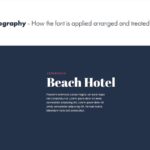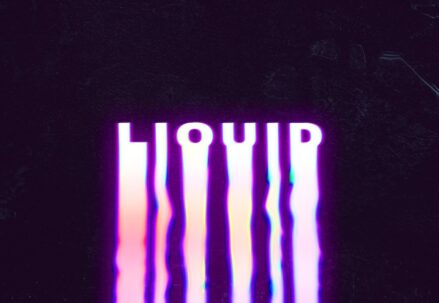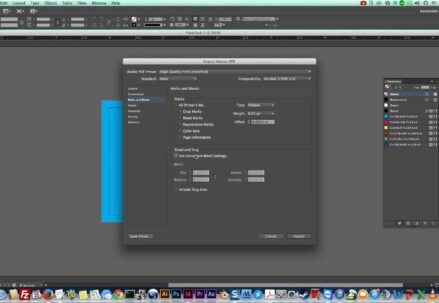In the dynamic landscape of today’s creative industries, where innovation and aesthetics converge, art direction stands as a pivotal force, guiding the narrative and visual identity of projects across various mediums. The discipline of art direction is not merely about producing eye-catching designs; it is a complex alchemy that melds imagination, strategy, and technical expertise. At its core, art direction is a catalyst for creative problem-solving, a dynamic process that demands both artistic ingenuity and a keen understanding of the unique challenges posed by each project.
In this article, we embark on a journey to explore the symbiotic relationship between art direction and creative problem-solving. We delve into the multifaceted role of art directors as they navigate the ever-evolving demands of an interconnected world, where storytelling, branding, and user experience are intertwined. Whether it’s in the realms of advertising, film, fashion, or digital media, art direction acts as a compass, steering projects towards the shores of success.
- A Deep Dive into the Role of an Artistic Director in a Graphic Design Agency
- Comprehensive Skillset Required for Successful Art Direction
- An Inside Look at an Art Director’s Process
- From Mood Boards to Brand Building: Articulating the Profound Vision
- Creating the Brand’s Design Blueprint: The Style Guide
- Conclusion
A Deep Dive into the Role of an Artistic Director in a Graphic Design Agency
Ever been curious about the nitty-gritty of an Art Director’s role? The term ‘Art Director’ often gets thrown around in various sectors, which makes understanding this role quite a brain teaser. Plus, the highly esteemed nature of the position might create a sense of elusiveness. With this article’s help, we seek to demystify the significance of Artistic Direction in a graphic design agency and provide a sneak peek into the real-world process of an Art Director.
Unveiling the Role of an Art Director
Primarily, an Art Director assumes team leadership in a graphic design agency. They don’t just work; they inspire the design team to hatch pioneering and impression-making ideas, which they then refine until they meet the clients’ stringent expectations for top-notch designs. An Art Director’s responsibilities are like an interesting puzzle, with pieces that include deep investigative research about clients, architecting a vivid conceptualization of the brand or project, defining its aesthetic, and ensuring the design team maintains alignment with these directives.
Role of an Art Director
- Creative Leadership: An Art Director steers the creative ship, generating and refining innovative design ideas;
- Client Research: They dive deep into the client’s objectives, mission, and expectations to fully understand what is required;
- Conceptualization: They create a vivid picture of the brand or project for the team by leveraging insights gleaned from the research;
- Aesthetic Definition: They pinpoint the look and feel of the project, laying down the aesthetic direction it should take;
- Team Guidance: They guide the team, ensuring consistency in their design interpretations.
So, in essence, an Art Director is like a compass, providing guidance for team members as they find their way through a vast array of specialized mediums. Their role is pivotal in shaping the final project, ensuring that the band’s visual narrative is consistent, compelling, and aligned with the client’s needs.
Comprehensive Skillset Required for Successful Art Direction
An Art Director wears many hats, drawing upon a broad array of skills to successfully guide their team and projects. Perhaps the most pivotal of these skills is the development of an astute artistic eye. Honing such a talent isn’t easy; it demands years of meticulous learning, practice, and real-world experience. But once achieved, it can discern the subtleties of color theory, typography, and graphic design principles. Moreover, an Art Director’s artistic eye isn’t stagnant – it continually evolves and stays in sync with shifting trends, drawing wisdom from the vibrant tapestry of art and graphic design history.
Essential Skills for Art Directors:
- Artistic Eye: Mastery over elements like color theory, typography, and graphic design principles;
- Leadership Skills: Ability to direct a team towards a shared vision;
- Communication Skills: Ability to connect with a variety of personalities and harmonize different perspectives;
- Inspiring Attitude: Ability to motivate the team to reach the shared goal;
- Problem-Solving Skills: Capacity to handle conflicts and keep everyone aligned;
- Historical and Trend Knowledge: Understanding of art and graphic design history and awareness of current trends.
According to Linus Lohoff, Graphic Designers may ask, “does it look good?”, whereas Art Directors delve deeper, asking, “does it feel good?” This distinction underscores the comprehensive and intuitive perspective an Art Director must possess.
An Inside Look at an Art Director’s Process
An Art Director’s journey begins with an essential phase of briefing and investigation. This phase, often termed the ‘Brand Audit’ at places like Creative Repute, set the foundation for all client projects. It involves an in-depth review of the initial information gathered about the client, followed by the formulation of general and specific questions to determine the brand’s identity and project requirements.
This investigative stage is a deep dive into the brand’s history, current standing, and envisioned future. Its aim is to discern what sets the company or organization apart and understand its “soul”. If the brand was a person, how would it express itself? Who would be its most resonating audience? The answers to these questions spark initial thoughts on vital aspects like color palette and keywords, paving the way for targeted, effective design strategies.
The Discovery Phase: A Deeper Dive Into Brand Identity
Once the brand audit is concluded, Art Directors segue into a more intensive exploration phase, or what Creative Repute fondly dubs, ‘Discovery’. This phase necessitates immersing oneself in the client’s world to crystallize their identity and develop effective visual strategies aligned with their ambitions. As the saying goes, ‘rules are for the obedience of fools and the guidance of wise men’; that succinctly sums up the approach to this phase. The information highway is wide-ranging, encompassing digital platforms, publications, art, music, performances, and even informal chitchat.
A thorough scrutiny of the client’s social media footprint often provides invaluable insight into their brand identity and customer engagement strategies. Additionally, a comprehensive analysis of businesses or organizations operating in similar or competitive arenas offers a broad context and potential ideas for differentiation. The ultimate objective is to perceive and appreciate the link between visual identity and brand persona.
Effective Research Strategies
- Start with broad, relevant topics, and delve into their definitions, associations, and symbolism;
- Understand symbolism by researching meanings of keywords related to the brand;
- Note down or sketch anything that piques your interest;
- Gradually narrow down your research, focusing on the nuances of the individual brand.
From Mood Boards to Brand Building: Articulating the Profound Vision
Once the research phase concludes and a mountain of illuminating information is compiled, the Art Director, along with their team, focuses on assembling this data. This process includes gathering inspiration for the project based on the uncovered insights. An integral part of this phase is creating mood boards that encapsulate the intended aesthetic trajectory. Mood boards represent a mosaic of inspiration – they can include photographs, promotional materials, designs, works of art, colors, typography, and even multimedia components like sounds and videos.
Upon acquiring consensus from both the client and design team regarding the mood board’s guiding blueprint, the Art Director transitions to the brand building phase. This involves collaborating closely with the Design team to formulate key brand elements, including the logo mark, text, brand typography, and color palette. While an Art Director possesses substantial design expertise, their primary focus in this stage is on extrapolating the insights gleaned from the Discovery phase and embedding them into the overarching aesthetic and concept of the designs. Subsequently, the baton is passed to Graphic Designers, who refine the logo and branding, continually receiving feedback and guidance from the Art Director.
Creating the Brand’s Design Blueprint: The Style Guide
After all the elements are approved and finalized, the Art Director collaborates with the Design team to curate a Style Guide or Brand Book, a holistic, comprehensive document that represents the essence of the new brand identity. Besides integrating key components like the logo design, color scheme, and typography, a Style Guide also delineates the brand’s broader landscape, offering guidelines for maintaining striking and consistent branding.

The Style Guide is a distinctive, essential asset that maps out specifics such as logo utilization, clear space rules, and preferred visual styles. An outstanding Style Guide offers clarity on whether the brand narrative should unfold through captivating photography, cutting-edge illustrations, or a specific visual system. In some cases, the brand could reflect a fusion of these elements. Furthermore, a well-conceived Style Guide also provides practical examples of suitable types of photography, illustrations, or graphic styles that align with the brand ethos.
Key Components of a Style Guide
- Logo Usage Guidelines: Details on how to use and not use the brand logo;
- Clear Space Rules: Instructions on maintaining space around the logo for visibility and impact;
- Visual Styles: Suggestions on the type of visuals that resonate with the brand;
- Real-life Examples: Examples to further clarify the usage of the suggested visual styles.
Visualizing the Brand in Action: Mockups
The Style Guide doesn’t stop at providing guidelines; it moves a step ahead to include mockups. Mockups are realistic representations of how the new branding will look when applied in various applications. This visual aid is especially beneficial for those without a creative or artistic background, offering them a tangible glimpse into how the rebranding will come to life.
Mockups are tailored to the client’s needs, encompassing a gamut of applications such as business cards, stationery, T-shirts, tote bags, and even mocked-up social media pages. These representations foster a shared vision, helping clients to visualize the practical implementation of their rebranded identity.
In every project phase, the Art Director’s role is pivotal. Still, the initial phase of conceptualizing and delineating a brand is where their expertise truly shines, steering the project towards a coherent and compelling visual narrative.
Conclusion
In conclusion, the role of art direction in creative problem solving is undeniably vital in the ever-evolving world of design and communication. Throughout this article, we have explored how art direction serves as a guiding force, bridging the gap between the conceptualization of ideas and their visual execution. It empowers creative teams to overcome challenges, think outside the box, and produce impactful, resonant visual content that effectively communicates messages and engages audiences.
Art direction is more than just a set of guidelines; it is a dynamic and multifaceted discipline that requires a deep understanding of aesthetics, storytelling, and psychology. By orchestrating the visual elements of a project, art directors can craft compelling narratives, evoke emotions, and elicit desired responses from viewers.





